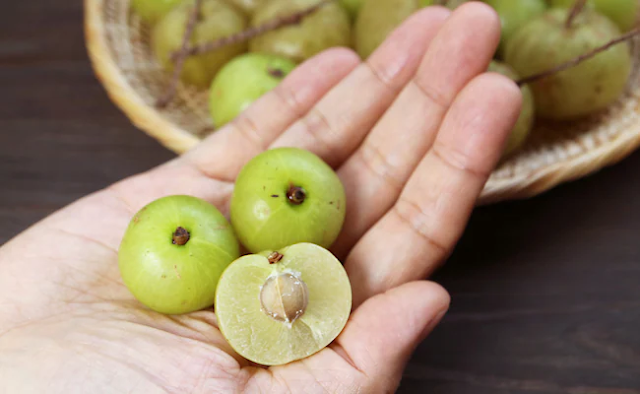Chole Bhature in Breakfast : सुबह का ब्रेकफास्ट सेहत के लिहाज़ से बेहद महत्वपूर्ण होता है, लेकिन यह तभी फ़ायदेमंद होगा, जब इसमें सेहतमंद चीजें शामिल की जाएं. ऐसे में सवाल होता है कि सुबह नाश्ते में क्या खाएं और क्या नहीं. दिन की शुरुआत किस तरह के फूड्स से करनी चाहिए, ताकि सेहतमंद रहें.
आपके इसी सवाल का जवाब अमेरिकी डॉक्टर रवि के गुप्ता (Ravi K Gupta) ने अपने इंस्टाग्राम वीडियो में दिया है. उन्होंने चेतावनी दी है कि सुबह के वक्त भूलकर भी छोले भटूरे नहीं खाने चाहिए, क्योंकि यह हानिकारक हो सकता है. सेहत के हिसाब से उन्होंने बताया है कि कौन सा ब्रेकफास्ट अच्छा और कौन सा खराब हो सकता है.
हेल्थ के लिहाज से सबसे बेस्ट ब्रेकफास्ट
मैगी
डॉक्टर रवि के गुप्ता का कहना है कि मैगी (Maggi) को बनाना आसान है लेकिन इसमें पौष्टिक तत्व नहीं पाए जाते हैं, ऐसे में इसे ब्रेकफास्ट में खाना नुकसानदेह हो सकता है. इसे सिर्फ मजबूरी में खा सकते हैं.
डोसा
डॉक्टर का कहना है कि डोसा (Dosa) यह एक अच्छा ऑप्शन हो सकता है, स्टीम्ड होने के चलते ब्रेकफास्ट में रोज खा सकते हैं. इससे सेहत को नुकसान नहीं बल्कि फायदा होता है. यह एक अच्छा फूड है.
इडली
डोसा की तरह ही इडली (Idli) भी स्टीम्ड और हेल्दी ब्रेकफास्ट है. इसे नाश्ते में रोजाना खा सकते हैं. इससे सेहत को एक नहीं कई सारे फायदे मिलते हैं. पेट को भी काफी आराम मिलता है. यह दिनभर एनर्जी बनाए रखता है और मोटापा नहीं बढ़ने देता है.
ब्रेड ऑमलेट
डॉक्टर रवि के गुप्ता बताते हैं कि अंडा (Egg) प्रोटीन का अच्छा सोर्स है. इससे शरीर को कई बेनिफिट्स मिलते हैं. इसे रोज खाना फायदेमंद हो सकता है. इससे बनने वाला ब्रेड ऑमलेट ब्रेकफास्ट में शामिल करना अच्छा विकल्प हो सकता है.
आलू पराठा
आलू पराठा भी बहुत से लोग सुबह-सुबह खाना पसंद करते हैं. इसे दही के साथ खाने से प्रोटीन अच्छा मिल सकता है. तेल की बजाय थोड़ा सा देसी घी इस्तेमाल करना ज्यादा फायदेमंद हो सकता है. ब्रेकफास्ट में यह एक अच्छा विकल्प हो सकता है.
पोहा
सुबह के नाश्ते में पोहे को अच्छे विकल्प के तौर पर ले सकते हैं. यह चावल से बना होता है. अगर इसमें वेजिटेबल्स के साथ मिलाकर बनाएं तो रोजना खा सकते हैं. इससे जल्दी भूख नहीं लगती और मोटापा भी नहीं बढ़ता है.
छोले भटूरे
छोले भटूरे तले-तले होते हैं. इनमें तेल और वसा की मात्रा काफी ज्यादा होती है, जो सेहत के लिए हानिकारक हो सकती है. इसे ब्रेकफास्ट में खाने से बचना चाहिए. इससे जितना दूर रहेंगे, उतनी ही सेहत अच्छी रहेगी. इसके अलावा छोले-कुचले भी खाना खतरनाक हो सकता है. हालांकि, इसे कभी-कभी खा सकते हैं लेकिन रोज नहीं.
छोले-भटूरे के क्या नुकसान हैं
पेट खराब होता है
मोटापा तेजी से बढ़ता है
हड्डियों को कमजोर बनाता है
मैदे की वजह से फूड एलर्जी का डर
मैदे की वजह से इम्यून सिस्टम कमजोर होता है
मैदे का ग्लाइसेमिक इंडेक्स बहुत अधिक होने के ब्लड में शुगर का लेवल बढ़ सकता है यानी डायबिटीज का खतरा
Disclaimer: खबर में दी गई कुछ जानकारी मीडिया रिपोर्ट्स पर आधारित है. आप किसी भी सुझाव को अमल में लाने से पहले संबंधित विशेषज्ञ से सलाह जरूर लें.






